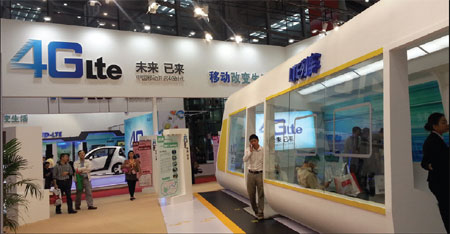Cross-border connections
Updated: 2013-10-11 06:58
(HK Edition)
|
|||||||
ZTE Corporation, a leading telecommunications equipment provider with its head office on the mainland provided the technology that allowed CSL to move the new LTE-A300 technology into place.
CSL's acquisition of a broad spectrum of radio frequencies, allowed the technology to reach a higher level, above the initial releases of Long Term Evolution (LTE) but that still wasn't enough.
ZTE's "carrier aggregation technology" (CA) took it the rest of the way. CA is a technology for increasing transmission bandwidths over what is capable of being supported by a single carrier or channel, Julian Wang, managing director at ZTE (HK) Ltd, says.
In terms of LTE deployment, ZTE has over 60 LTE commercial contracts in place, and 140 trials with different operators all over the world. Around 70 percent of countries where LTE has been launched use the company's technology Wang adds. He lists, China Mobile, Telenor, TeliaSonera, Bharti, Hutchison, and Telstra among clients using ZTE's 4G LTE equipment.
Wang says that ZTE has focused unprecedented attention on 4G, with the objective of becoming the top 4G solution provider in the world.
"Our investment in the R&D of 4G LTE is also unprecedented," he says, explaining that ZTE has eight R&D centers specializing in 4G LTE, in Xi'an, Shanghai, Nanjing, Shenzhen, Chengdu, Tianjin, San Diego in the US and Stockholm, Sweden.
Xi'an is the largest of the company's R&D centers - where the company has a 6 billion yuan ($980 million) investment, said Wang.
He adds, ZTE has 5,000 people working on R&D to develop LTE technologies.
"We also have 500 people working for the carrier aggregations which is why we were able to provide the first carrier aggregation demonstration in Hong Kong," Wang says.
"We want to produce the leading products and we want the most advanced technology of LTE to come from our R&D centers."
ZTE also wants to enhance its presence in the domestic retail market, reaping from its years of experience and expertise in the business-to-business market
The potential of the smartphone market in China is great and we certainly would want to increase our market share, says Wang.
The company recently became the first to earn regulatory approval on the mainland to sell a handset providing access to fourth-generation network service.
The company's Grand Memo handset was approved by China's Ministry of Industry and Information Technology to run on the 4G TD-LTE network standard.
ZTE expects its 4G mobile phone sales to account for half of all smartphone sales after the issue of 4G licenses by the Chinese government, according to mainland media reports.
China is expected to issue 4G licenses by the end of this year.
As for the handset market in Hong Kong, ZTE plans to invest more in brand building, says Wang, adding that the company has opened wide channels with major distributors on how to build its brand in the city.
"But we expect it will take a lot of time," he admits, especially given that mobile giants like Apple and Samsung already have a powerful presence in the city.
ZTE also plans to bring some of its featured products into Hong Kong, including a customized cell phone for children.
"We will continue to cooperate with major operators like CSL in Hong Kong and launching customized products, which is our traditional strength," says Wang.
He says the "children's phone" can sound an alarm which will help parents locate children if they go missing.
The market grows. And the mobile phone technology that was touted as bringing people together, in the first place, appears to be playing a leading role in causing them to drift apart.

(HK Edition 10/11/2013 page5)